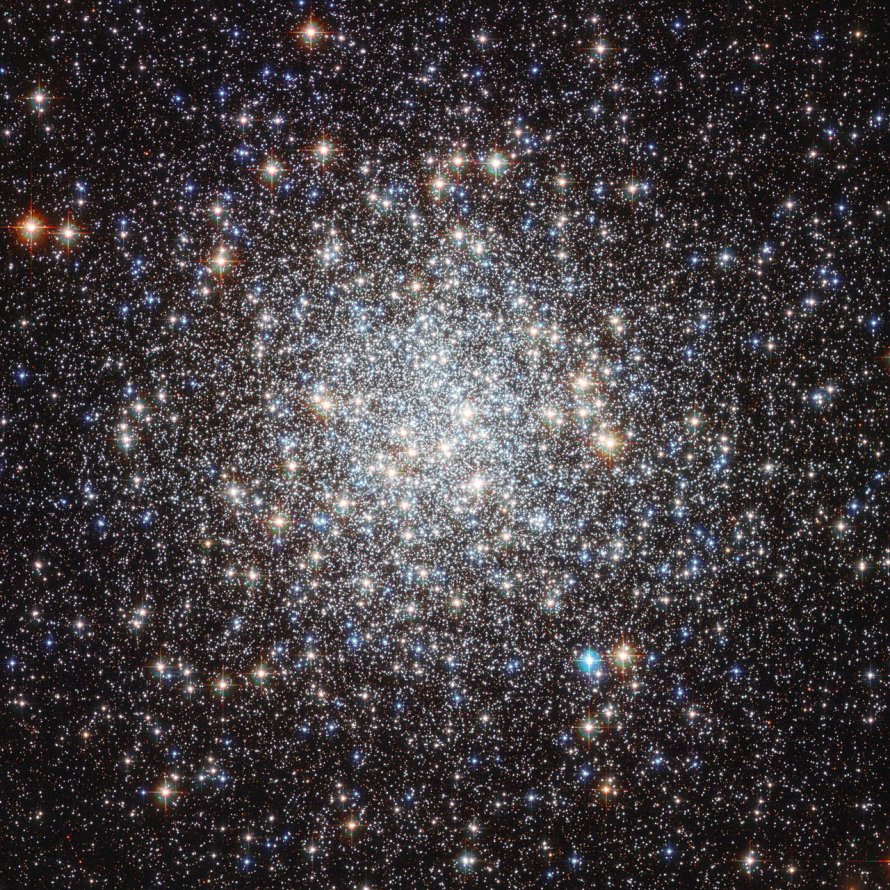M9 (NGC 6333)
Messier 9 (NGC 6333) is a globular cluster located in the constellation Ophiucus, in the Galactic Center of the Milky Way Galaxy in the Local Group of galaxies. M9 is 25800 light years away from Earth.
M9 is best viewed during mid-summer, is magnitude 8, and can be viewed with binoculars. M9 is 9' in apparent size. For reference, the full moon is 30'.
Observing difficulty: Intermediate
- Name:
- Type:
- globular cluster
- Constellation:
- Ophiucus
- NGC or IC:
- NGC 6333
- Magnitude:
- 8
- Viewing:
- binoculars
- Size:
- 9'
- Distance (light years):
- 25800 LY
- RA:
- 17h 19.2m
- Dec:
- -18 31'
- Season:
- mid-summer
- Milky Way location:
- Galactic Center
- Galaxy group:
- Local Group
- Messier Marathon #:
- 81
* The naked eye can see up to magnitude ~7-8 objects under ideal dark sky conditions.
Probing a Dense Cosmic Gathering
Messier 9 (M9), situated in the constellation Ophiuchus, is a compact globular cluster, a spherical assemblage of stars tightly bound by gravity. With its massive population of ancient stars and unique characteristics, M9 provides an interesting glimpse into the early universe. This article provides a detailed technical exploration of M9, outlining its discovery, physical attributes, stellar population, and its scientific significance.
Discovery and Observation
M9 was first observed by Charles Messier in 1764, making it one of the original discoveries of his eponymous catalog. Located at an approximate distance of 25,800 light-years from Earth, M9 is one of the nearest globular clusters to the center of the Milky Way. This cluster is observable in binoculars and small telescopes, revealing a somewhat elliptical, dense cluster of stars, dimmed and reddened by substantial interstellar dust in the galactic plane.
Physical Characteristics
The physical dimension of M9 spans about 90 light-years in diameter, with a much denser core region of about 12 light-years across. It is a class VIII globular cluster, signifying a high central concentration of stars. This stellar density hints at a core collapse, a phenomenon where dynamical processes lead to a dense packing of stars at the core.
Stellar Composition
M9 houses hundreds of thousands of stars, most of which are low-mass, older stars with low metallicity, reflecting the elemental abundance of the early universe. The majority of its stars are red giants, evolved stars in the late stages of their life cycles. However, it also contains a population of blue stragglers ? anomalously young-looking stars thought to arise from stellar interactions.
Variable Stars
M9 is home to a significant number of variable stars, stars that change in brightness over time. Among its estimated 13 variable stars, the majority are RR Lyrae variables. These stars have periods of pulsation that correlate with their absolute brightness, making them invaluable "standard candles" for determining distances to astronomical objects.
Scientific Significance
The location and age of M9 make it an intriguing subject for astronomical study. Its close proximity to the galactic center allows for a better understanding of the environmental impacts of such an intense gravitational field on the dynamics of globular clusters. The low metallicity and advanced age of its stars provide valuable insight into the conditions of the early universe. Further, the cluster's variable stars offer a unique opportunity to calibrate cosmic distances and to understand stellar evolution processes.
Apparent Magnitude and Distance
The apparent magnitude of M9 is approximately 7.9, which places it beyond the threshold of visibility with the naked eye but within reach of binoculars or small telescopes under favorable conditions. It is estimated to be located at a distance of about 25,800 light-years from the Earth, making it one of the more remote globular clusters of the Messier objects.
Finding and Observing Messier 9
M9 lies within the constellation of Ophiuchus, the Serpent Bearer. It is not far from the constellation's brightest star, Eta Ophiuchi. While Ophiuchus is visible in both hemispheres, it is more easily seen in the summer months from the Northern Hemisphere.
Despite its relatively high magnitude, spotting M9 requires a clear dark sky, patience, and a good star chart due to its compact size and the multitude of stars in this part of the sky. Binoculars may show it as a faint and fuzzy star, while a small to medium-sized telescope will reveal its true nature as a globular cluster. Higher magnifications and larger telescopes will further resolve individual stars within the cluster, particularly around the edges.



